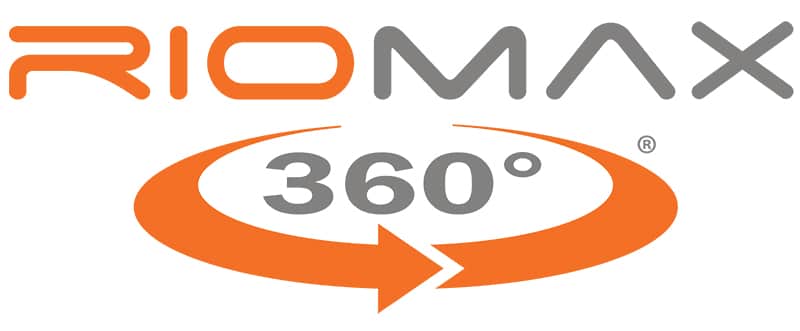Last updated on October 2nd, 2023 at 02:32 pm
Input costs are increasing. And nobody’s immune.
A question any beef producer should ask is, where will Riomax® help cut costs?
A valid question. However, a better question could be where doesn’t Riomax® help cut costs?
It won’t help your pickup get better fuel mileage. It will, however, help your cattle get more mileage out of their fuel. And in a time of ever-increasing input costs, you can still get better fuel mileage out of your cows by supplementing strategically.
Everyone is scratching a bald spot as they figure and refigure ways to deal with rising input costs, says Trevor Greenfield, founder and co-owner of Riomax®. That’s true of ranchers and it’s true of the companies that supply ranchers with the inputs they need to operate.

Tub Input Costs
Just like their customers, the folks at Riomax® did a lot of figuring in 2021, trying to work around rising costs. “We got beat over the head with input costs going up,” Greenfield says. “We took it in the gut all year until we couldn’t make it happen anymore.”
As a result, Riomax® announced a price increase of approximately 14 percent the end of 2021. The company wasn’t the only one, however. Riomax®'s competitors all raised prices from 10 to 20 percent or more going into 2022.
But, as a growing number of beef producers have come to experience, Riomax® tubs help cut costs in a number of ways, from better fuel mileage from the cows to more calves and healthier calves at birth, branding, and weaning.
Let’s look at hay savings.
The average cost per head per day on a semi load of Riomax® tubs increased from 29 cents to 34 cents, and now to 37 cents. According to USDA, fair quality grass hay was trading for around $150 per ton for large round bales as 2021 waved adios. Beef producers around the country report hay savings of 15 to 30 percent when their cows are getting their vitamin and mineral supplement with Riomax®.
At $250 per ton and assuming a cow is consuming 30 pounds per day, the cost per head per day per cow is $3.75. If your cows are consuming 15 percent fewer pounds of hay per day, that lowers the daily hay cost to $3.19, for a 56-cent-per-day savings.
At the lower end of the hay savings scale, you’re essentially feeding Riomax® at zero cost.
The midpoint in the range of hay savings is 22.5 percent. At that level, Riomax® is putting money in your pocket. Here’s how:
- At 22.5 percent reduced hay consumption, assuming $3.75 per day per cow at 30 pounds, your hay cost per day per cow drops to $2.91.
- That’s 84 cents per day less in hay cost.
- Subtract the 37 cents average cost for Riomax® and you’re putting 47 cents per day per cow in your pocket.
Each operation will be different, so it’s important to do the math based on your numbers. But the numbers in the example are real. The amount of hay savings comes from beef producers who supplement with Riomax® during the winter hay feeding season.
Now let’s look at your calf crop.
CattleFax estimates that the 2021 average price for a 550-pound steer will settle around $170 per cwt. At that price, a weaned steer was worth $935 per head.
Many Riomax® customers report a 5 percent or better breed-up after putting tubs in front of their cows and heifers. For the sake of illustration, let’s assume a 300-head cow herd with an 85 percent breed-up prior to Riomax®. With a 5% improvement, that puts breed-up at 90% for an increase of 15 more calves.
Fifteen more calves at $935 per head means an extra $14,025 added to the bottom line.

The Best Buy for Your Livestock Supplement Dollar
“What we are focused on, and always have been and always will be, is not how much that tub costs you up front, but how that tub can pay for itself in terms of hay savings, forage savings, calving performance, weaning weights, conception rates, calf health,” Greenfield says.
It would be easy to cheapen the tub cost by reformulating the ingredients. But that’s not the Riomax® way. Greenfield recalls the vitamin crisis a few years back when vitamin prices took a rocket ride following a fire that destroyed the world’s main vitamin factory in Germany.
Many companies reduced vitamin inclusion rates in their supplements to keep costs down. “Duane (Paskewitz, Riomax® co-owner) and I looked at each other and said, ‘We’re in this for results and results are what pays the bills for our customers. So it would not be ethical to start watering down the formula just to get to a perceived cheaper price. If we believe in results and if that truly is what drives the economic model of our customers, then we must stay the course.’”
That same philosophy applies now. Just looking at the things Riomax® uses to get its products to beef producers—freight, pallets, plastic containers—all have seen price increases, Greenfield says. But the main cost increase for Riomax® is the ingredients that make Riomax® work.
“So, with that said, I say the day we start to change our formula to cheapen up our price is the day that we’ll start going out of business, because then we’ve forgotten who we are and who we serve.”


